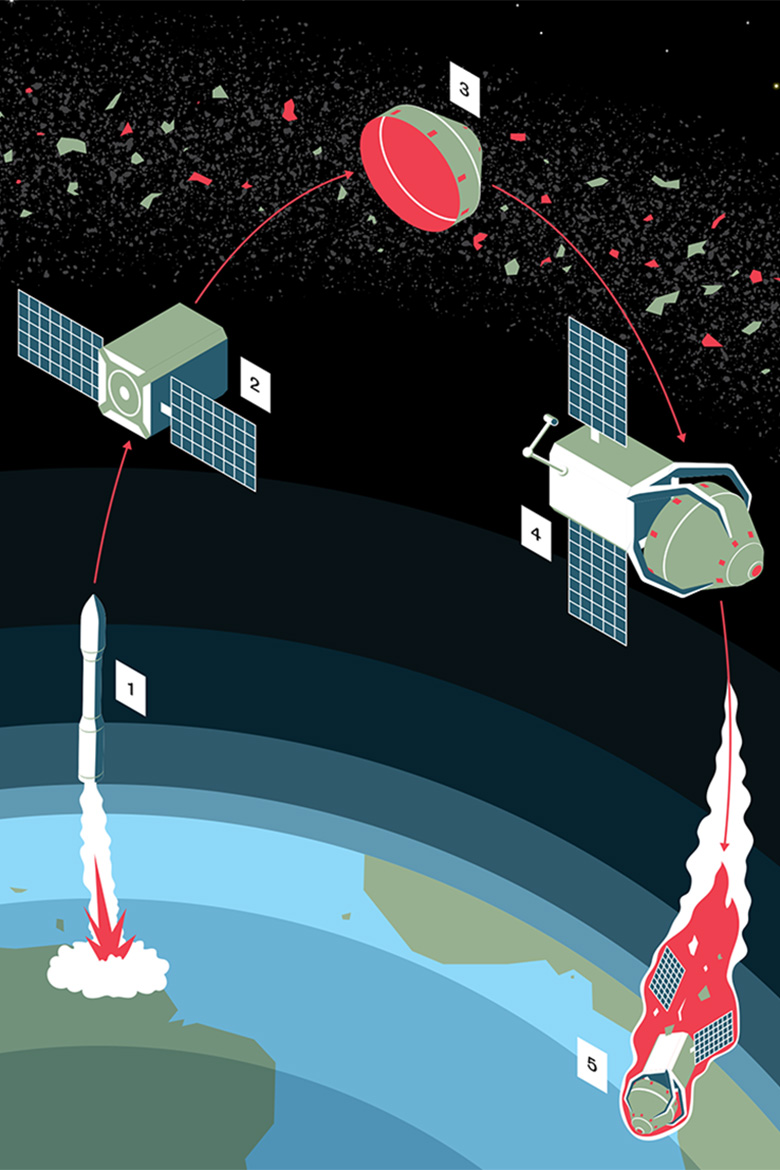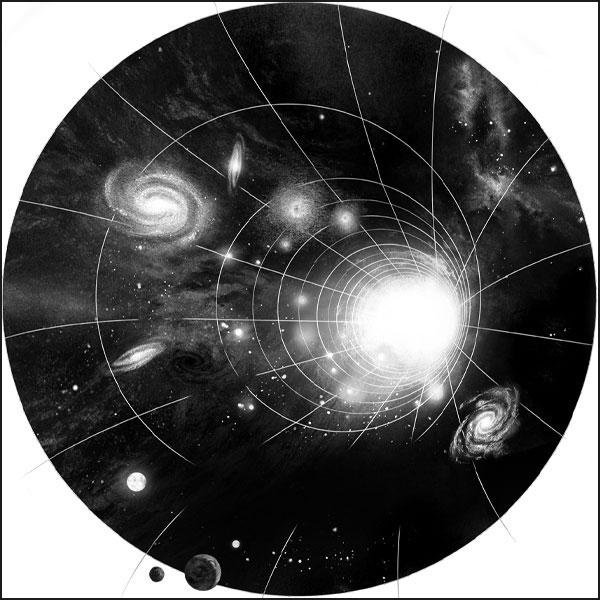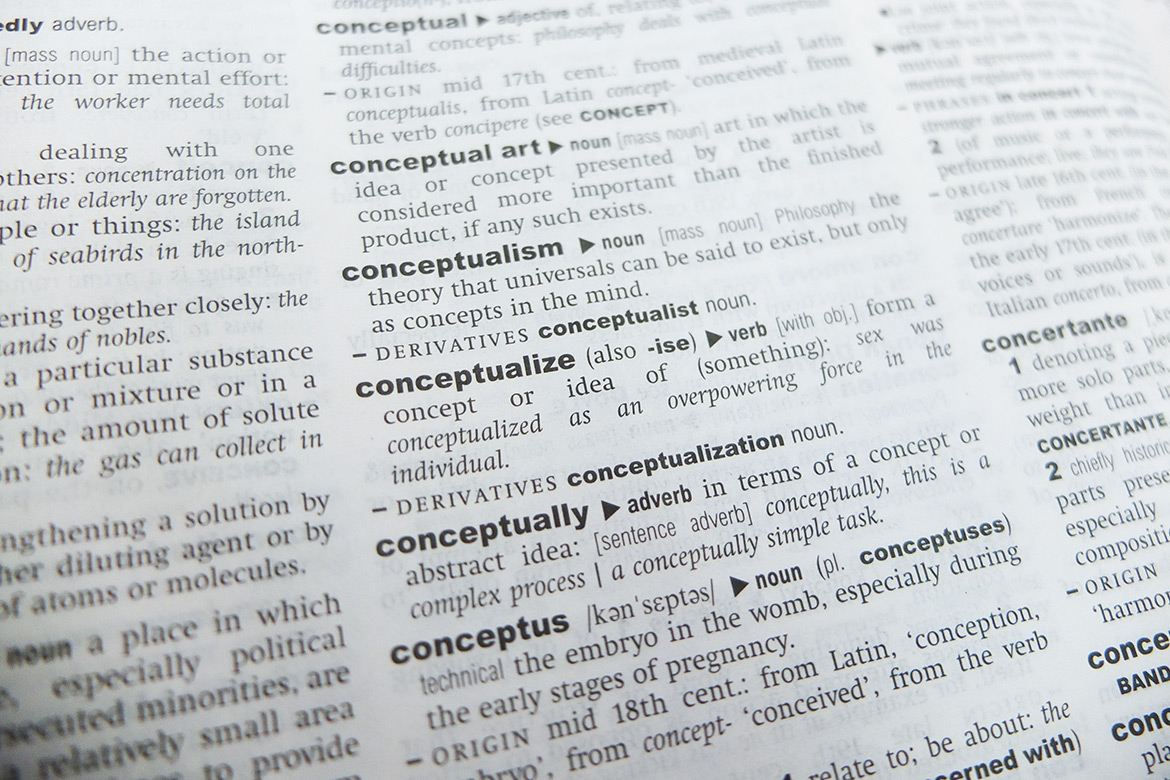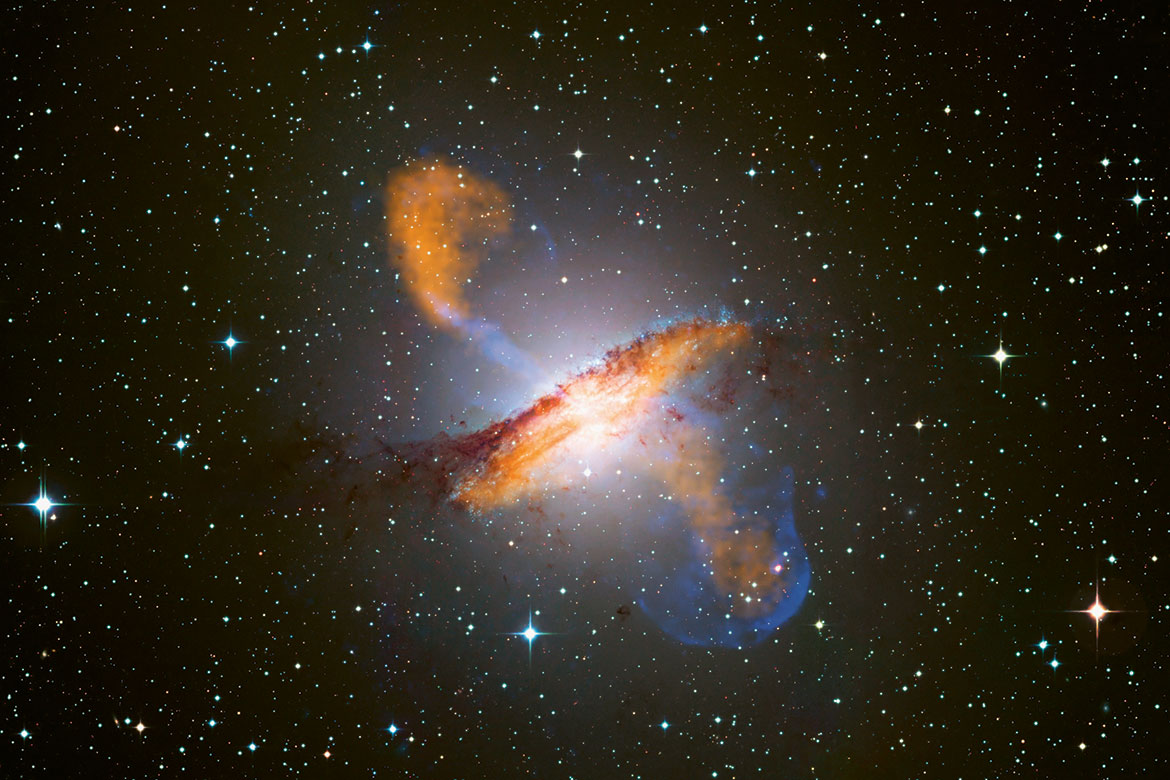
Illustration: ikonaut
5 – Crashing together
The Hunter and its prey, propelled by the energy of the former, will then continue on their course until they crash towards Earth, burning together as they enter the atmosphere over the Pacific Ocean. This first Clear Space mission will cost some EUR 100 million.
4 – The robot catches it
When the Space Hunter is close enough to its prey, it will unfold four tentacles. It will first wrap them around VESPA, then pull the space junk towards it.
3 – Waste is multiplying
The target of the 2025 mission is VESPA, the upper section of a European rocket from the year 2013. It is in near-Earth orbit and weighs around 100 kilograms. It poses a danger, because if it collides with another large piece of space debris, it will contribute to the Kessler effect – that’s the exponential growth of tiny pieces of junk caused by collisions in space. In future, ESA wants to dispose of five to 10 large pieces of its junk each year.
2 – The robot hatches
Once it’s up there, the Space Hunter will unfold itself. Space junk moves at 28,000 kilometres per hour and is spinning all the while, but the Space Hunter will be equipped with cameras and smart sensors so that it can target its prey optimally. It will have an autonomous navigation system and will be powered by wings made of solar panels.
1 – Lift-off
In 2025, the first rocket with a cleaning robot in its payload is due to lift off from the spaceport near Kourou in French Guiana. It will take the robot up to an altitude of around 650 kilometres.





